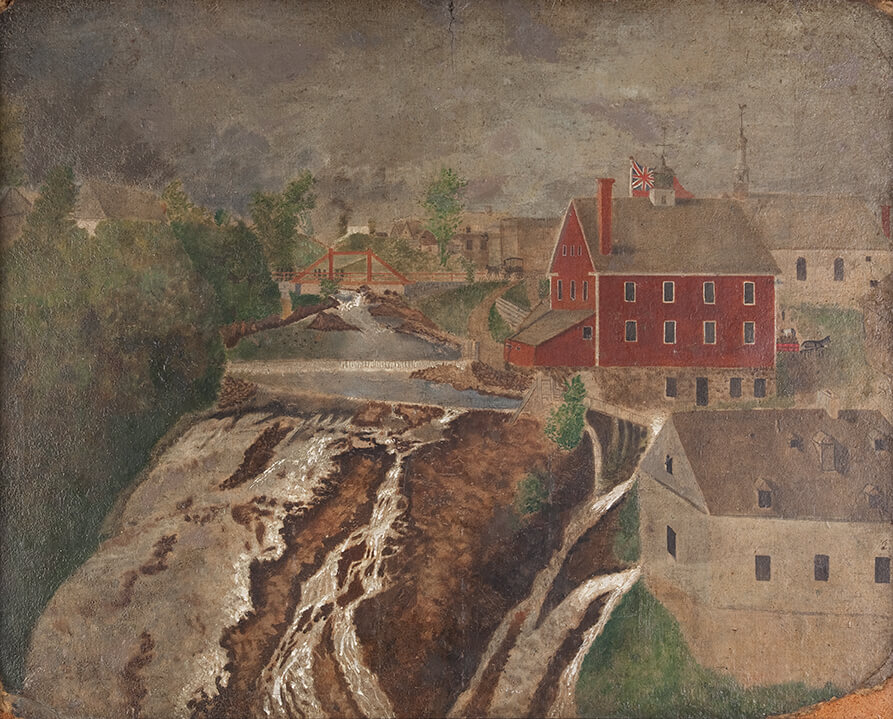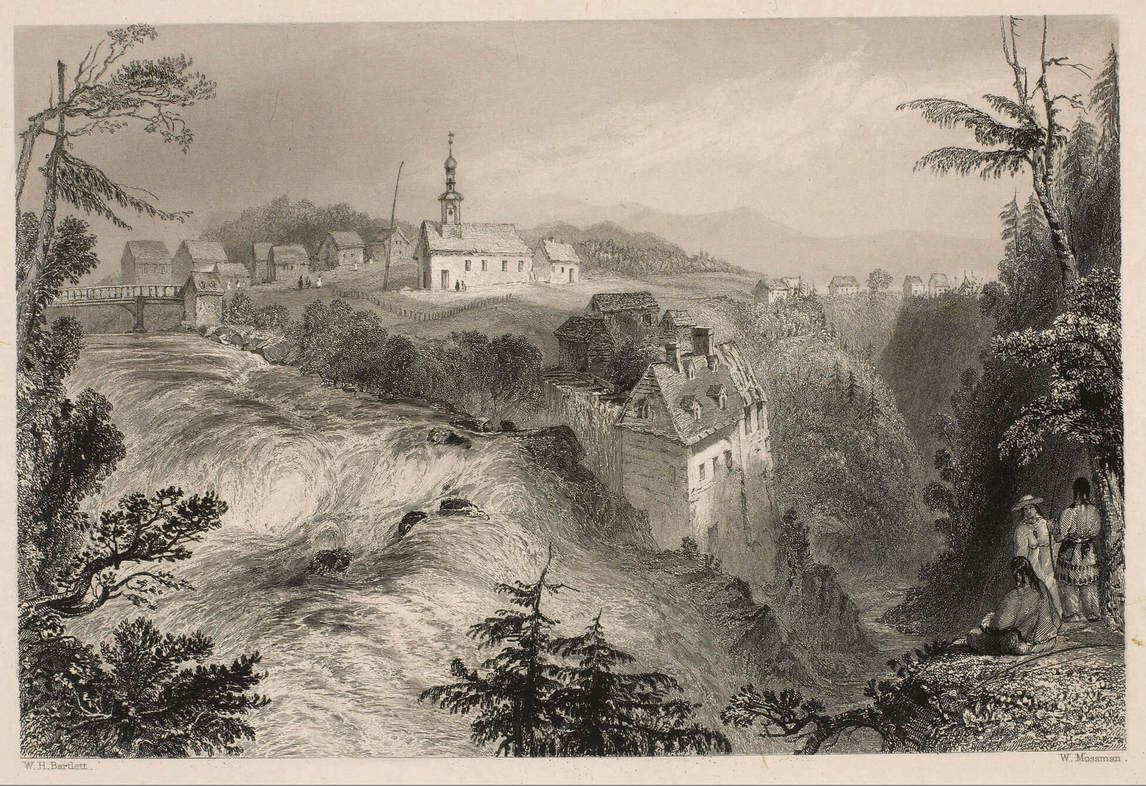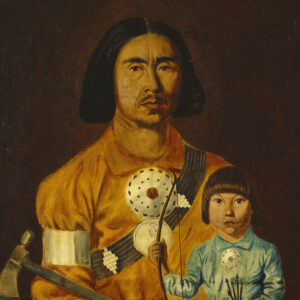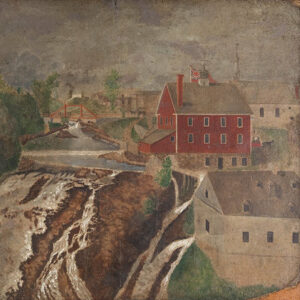Lorette Falls c. 1860

Zacharie Vincent, Lorette Falls, c. 1860
Oil on cardboard, 48 x 60.6 cm
Musée de la civilisation, Quebec City

Vincent no doubt drew his inspiration for this painting from one of the numerous photographs, lithographs, and other prints of Jeune-Lorette that were sold in the 1860s, many of which showed the falls from the same vantage point.
The scene in Lorette Falls seems to have been patched together from these widely circulated images and also from Vincent’s memory. Vincent divides the painting into two parts. On the left-hand side the paint is applied in a heavy impasto, and the principal subject of the work is depicted: nature in movement, the waterfall tumultuous under a dark sky with brighter sections where the clouds have parted. The right-hand side of the painting, which is rendered in a more graphic style, shows buildings and various picturesque details: a British flag flying over the roof of the mill, a weathervane, a church spire, a bridge in the distance. The architectural elements are rendered in a simplified way, from an ambiguous perspective; the artist makes use of several different viewpoints to create the scene.

 About the Author
About the Author
 More Online Art Books
More Online Art Books
 Acknowledgements
Acknowledgements